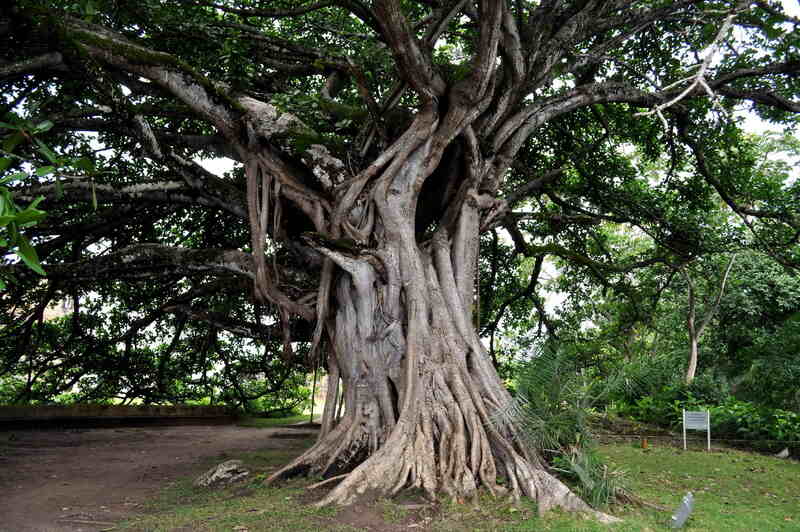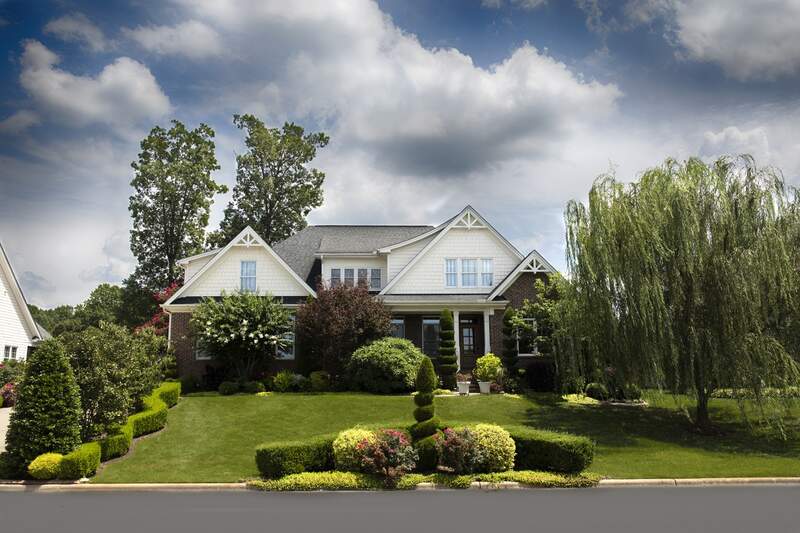
Trees in your yard provide framing and background for your property as well as beauty. Trees also improve your home’s curb appeal and help absorb noise, freshen the air, serve as windbreaks, and provide privacy and shade. But how do you pick the right site to plant a tree so that it performs the functions you want?
Many homeowners spend time and energy choosing the perfect tree and digging the right-sized hole but overlook the planting site itself. Most of the issues you will encounter stem from placing the wrong tree in the wrong place. Trees have specific site requirements that should be considered before planting. Every species of tree is unique and has its own set of qualities, needs, and benefits.
Pick the Right Species for Your Yard

You should consider what tree species will do best in your climate, soil, and growing conditions. First, you’ll need to determine your region’s hardiness zone by referencing the USDA Plant Hardiness Zone Map, which gives the average annual minimum winter temperatures plants are likely to survive at a given location.
Take note of how much shade and sunlight your property gets. Trees requiring full sun need at least six hours of sun a day to thrive. Trees that face south receive the most sunlight, which is necessary for plant growth.
Also, consider drainage before planting a tree. If your yard is sloped, trees planted at the bottom of your yard will hold more water and will be prone to drainage issues. If your yard has a drainage problem, here are some things you can do to handle this issue.
You also should take the soil type and chemistry on your property into account, as it may be very different from the tree’s natural growing habitat. A soil test can tell you what soil amendments your tree needs to be healthy. Different kinds of trees need different soil conditions, so use the information from your soil analysis to determine what trees would thrive in your yard.
Know Obstacles Above and Below
It’s important to be aware of overhead power lines and underground utility lines before you start digging. Planting tall growing trees under power lines can become a serious public safety hazard and requires constant pruning to keep branches at a safe distance from the wires.
Since roots extend further than the canopy, you also should consider root placement. You should also contact a utility company to mark underground lines before you dig. Accidentally digging into utility lines can cause serious injury. Know where your utility lines are, have them marked, and then dig. 811 is the national call-before-you-dig phone number. Anyone who plans to dig should call 811 or go to their state 811 center’s website before digging.
Before you plant trees, remember to look both above and below.
Be Aware of Other Nearby Structures

Before you plant, it’s important to know the tree’s height, crown spread, and root space. Trees often require more space than you think. Some species of trees grow very large quickly, and can become a hazard. Growing space is one of the most commonly overlooked tree planting factors and can result in roots or branches too close to buildings, septic systems, driveways, or sidewalks.
Trees with large canopies brush up against the side of a house, damaging the siding, and large root systems planted too close to sidewalks can cause sidewalks to buckle. Ensure that the newly-planted tree doesn’t block windows, street signs, or street lights.
Know the Mature Size of the Tree
Understand the mature size of a tree, including how wide the leaves and branches will spread. Keep trees at least 5-10 feet from buildings since the roots can damage foundations and branches can make it difficult to maintain the exterior of your home.
Trees used in landscapes are typically classified as small, medium, and large.
Small trees = Up to 25 feet
Medium trees = 26-74 feet
Large trees = 75 – 100 feet
Depending on the size of the tree, there should be a respectable distance between the mature tree and power lines. Trees within 15 feet of a power line should grow no higher than 20 feet tall, while trees planted 20-50 feet from a power line should not grow more than 40 feet tall, and trees growing taller than 40 feet should be planted more than 50 feet from power lines.
Plan Ahead for Future Landscaping
Having trees can increase your property value, but what are your long-term plans for your yard? Planning for the future will help you to avoid problems later.
Trees grow and will need to be pruned to keep this space open. If trees overhang your house, they present a safety threat and will need to be removed or pruned. And consider the cost to remove a tree if it dies or becomes a problem in the future.
Do you want to install a driveway, garage, or shed in the future? How big will the surrounding trees grow, and how much shade will they provide in the years that follow? If you want a garden, but the shade ends up being too dense, you will need to remove some trees to let in light.
Think About All Four Seasons
It’s important to think about your trees seasonally and how they will be throughout the entire year. How much sun does the site receive in the winter versus the summer? How much of a problem will falling leaves or needles be in this location? A flowering tree or fruit tree near the sidewalk will require a lot of cleanup and planting a pine tree near the driveway means that your cars will be covered in sap.
Think About the Purpose of Your Trees

Sometimes, you plant trees just for aesthetics, but other times they have a purpose, such as shade, noise reduction, or wind barrier. Maybe you need it to function as all of these things at once! Strategically pick out a spot for your tree so it effectively serves its purpose.
Accent
Small trees with attractive features like flowers and berries are often used to accent the landscape. An accent tree should be small, although any type of tree provides some degree of an accent. Small accent trees on large properties should be grouped for a more noticeable appearance.
Background
Trees developed to be a background should be planted so that when the front of the house is viewed, the treetops can be seen above the roof line. This softens the roof line and makes the house easier to spot.
Framing
Trees can be used to frame a house. When a house is properly framed by trees, it appears longer and more settled. On smaller properties, there may be room for only one large tree to serve as a frame, while on large lots or on rural sites, many trees may be used.
Screens
Tree screens can provide needed privacy and, at the same time, may establish a sound barrier or windbreak as well as a wall to block out any area that is an eyesore. Trees provide more screening than bushes and shrubs.
Tree screens are usually created with small or medium-sized trees. A screen of trees gives more variety than a fence since different trees can be blended together. Trees do not have to be in a straight line to create a screen.
Shade
Trees are commonly planted for shade and offer better shade than man-made structures like fences. The most important location for shade trees is usually the southwest corner of the house so that it shades the house during late afternoon in summer.
FAQ About How to Pick a Site to Plant a Tree
Plant deciduous trees so they will shade east-facing walls and windows from 7 to 11 a.m. and west-facing surfaces from 3 to 7 p.m. Plant smaller deciduous or evergreen trees with lower limbs northwest and northeast of the building to provide late afternoon and early morning shade. Position the tree so that the best side is facing in the direction you want. Dig a planting hole two to three times as wide as your tree’s roots and carefully place it in the hole, keeping the root ball intact.
Tree death is commonly caused by poorly drained sites and overwatering. Roots need oxygen, so the soil should be saturated when watering but allowed to dry out between waterings.
Locate a spot that’s as far away from the wall as the plant will be once it’s fully grown. So, if your new tree will reach 15 feet tall, choose a planting spot at least 15 feet away.
When to Hire a Tree Care Pro
If you’re not confident in your ability to correctly locate the best spot for your trees, or would rather just spend your time doing things you enjoy, then you might be happier hiring a reliable tree care expert.
If you need an experienced tree service to handle all of your tree, shrub, and lawn maintenance needs, check out Lawnstarter’s extensive list of landscaping contractors in your area.
Main Image Credit: Stockvault